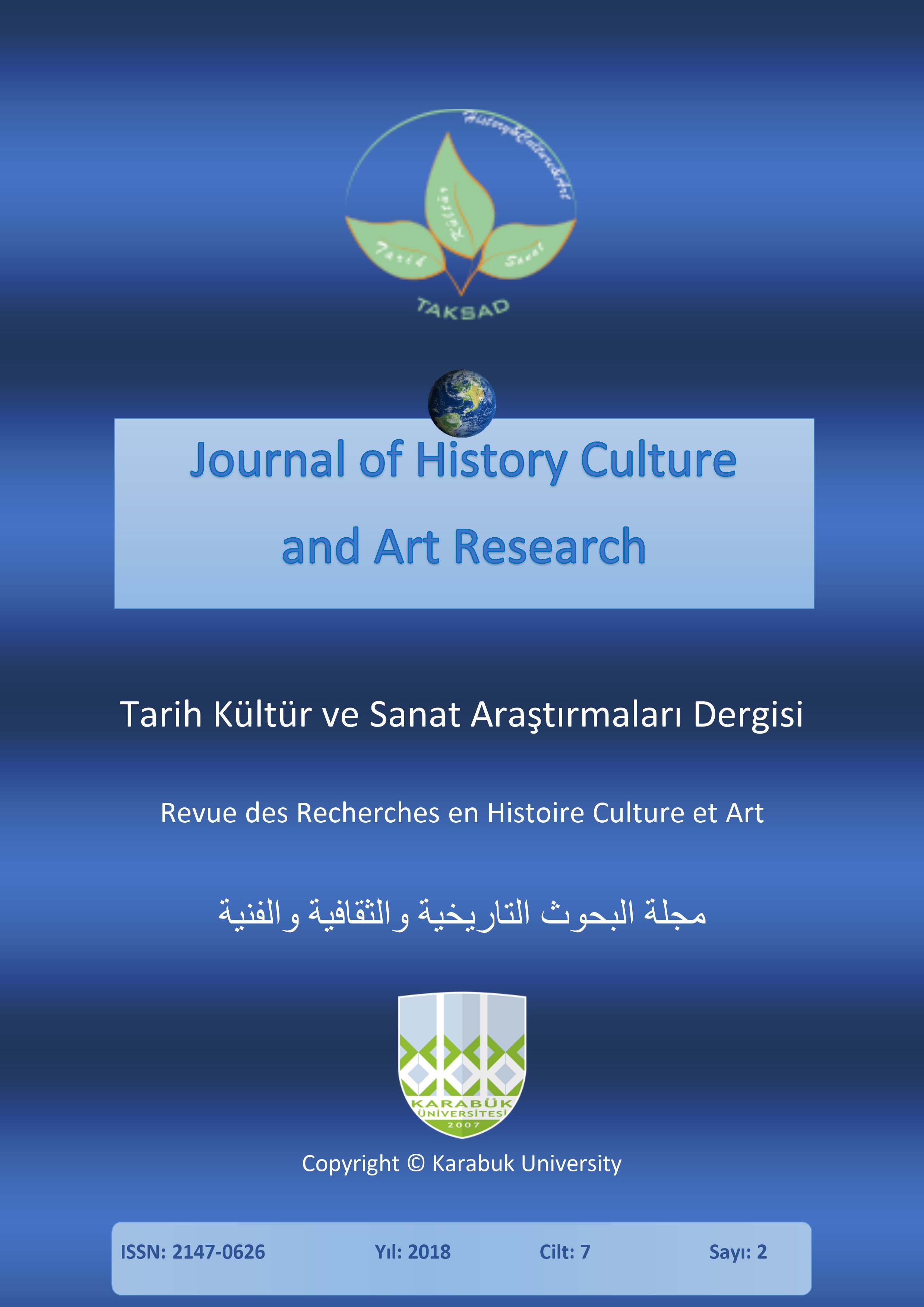A Eurocentric Reflection in Josep Conrad’s Heart of Darkness
DOI:
https://doi.org/10.7596/taksad.v7i2.675Anahtar Kelimeler:
Eurocentrism- Greek heritage- Western identity.Özet
The two continents, African and European have been in conflict for centuries and their hostility and aggression are derived from two distinct perspectives and portrayals on both sides. The African continent, especially with the start of the exploration of Africa as a matter of colonial and imperial concerns and interests, became a place mostly identified with perceived negative aspects of the country from a European perspective, such as savagery, primitiveness, inferiority, political instability, and conflicts especially in Western literature (European literature). As it is described in Joseph Conrad's Heart of Darkness by the narrator Marlow travelling along the Congo River, Africa is a 'dark place' of the earth. On the contrary, European Continent, namely the Western World is depicted through predominant Eurocentric perception thanks to which Europe has been looked upon by many people as a privileged place in the world. Eurocentrism is a way of seeing the world from a European point of view situated at the high pillar constructed by the European ego. From this high pillar, the European superior ego looks down upon the others who are expected to suffer from a sense of inferiority.
Referanslar
AbdelRahman, F. (2005). “Said and Achebe: Writers at the Crossroads of Culture”, the Journal of Negro History, Vol. 82, No. 1, pp. 185, JSTOR (4047456).
Achebe, C. (1978). "An Image of Africa", Research in African Literatures, Vol. 9, No.1, JSTOR (3818468).
Asante, M. K. & Mazama, A. (2005). Encyclopedia of Black Studies, London: Sage.
Ashcroft, B. & Griffith, G. (1995). Tiffin, H., Post-Colonial Studies Reader, London/New York: Routledge.
Conrad, J. (1899). Heart of Darkness, London: Penguin Books.
Goonetilleke, D. C. R. A. (2007). Joseph Conrad’s Heart of Darkness: A Routledge Study Guide, London/New York: Routledge.
Heit, H. (2005). “Western Identity, Barbarians and the Inheritage of Greek Universalism”, the European Legacy, Vol. 10, No. 7.
Hoskins, L. A. (1992). “Eurocentrism vs. Afrocentrism: A Geopolitical Linkage Analysis”, Journal of Black Studies, Vol. 23, No. 2, pp.248, JSTOR (2784533).
Jericko, J. (1984). Joseph Conrad’s Heart of Darkness & the Secret Sharer, Barron's Educational Series.
Kanth, R. K. (2009). The Challenge of Eurocentrism: Global Perspectives, Policy, and Prospects, New York: Macmillan.
Mcleod, J. (2000). Beginning Postcolonialism, Manchester/New York: Manchester University Press.
Meyers, J. (1991). Joseph Conrad, a Biography, London: Cambridge University Press.
Peled, S. (2010). “Photography, Home, Language: Ronit Matalon Facing Joseph Conrad’s Colonial Journeys in the Heart of Darkness”, Prooftexts, Vol. 30, No. 3, pp.341. JSTOR (102979).
Peters, J. G. (2006). The Cambridge Introduction to Joseph Conrad, New York: Cambridge University Press.
Rostovanyi, Z. (1998). “Myth or Reality”, Society and Economy in Central and Eastern Europe, Vol. 20, No. 1, pp. 119. JSTOR (41468527).
Said, E. W. (1994). Culture and Imperialism, NewYork: Vintage Books.
Shohat, E. & Stam R. (2014). Unthinking Eurocentrism: Multiculturalism and the Media, 2nd ed. London/New York: Routledge.
Wesley, C. (2015). “Inscriptions of Resistance in Joseph Conrad’s Heart of Darkness”, Journal of Modern Literature, Vol. 38, No. 3.
İndir
Yayınlanmış
Nasıl Atıf Yapılır
Sayı
Bölüm
Lisans
Tarih Kültür ve Sanat Araştırmaları Dergisi'nde yayımlanan tüm çalışmalar Creative Commons 4.0 CC-BY lisansı ile lisanslanmıştır.
Bunları yapmakta özgürsünüz:
- Bu eseri her boyut ve formatta paylaşabilir — kopyalayabilir ve çoğaltabilirsiniz.
- Materyalden Adapte et — karıştır, aktar ve eserin üzerine inşa et
- her türlü amaç için, ticari amaç da dahil
Alttaki şartlar altında:
Atıf — uygun bilgiyi, lisansa linki, and ve değişiklik yapıldıysa değişiklik bilgisinivermelisiniz. Sizi veya kullanımınızı lisansörün onayladığı bilgisini içermemek kaydıyla, size uygun şekilde bu işlemleri gerçekleştirebilirsiniz.
AynıLisanslaPaylaş — Eğer materyali karıştırdınızsa, aktardınızsa ya da materyalin üzerine çalıştınızsa, ancak aynı lisans ile dağıtabilirsiniz.
- Ek sınırlamalar yoktur — Lisansın izin verdiği hakları başkaları üzerinde kanunlarla ya da teknolojiyikullanarak sınırlayamazsınız.







